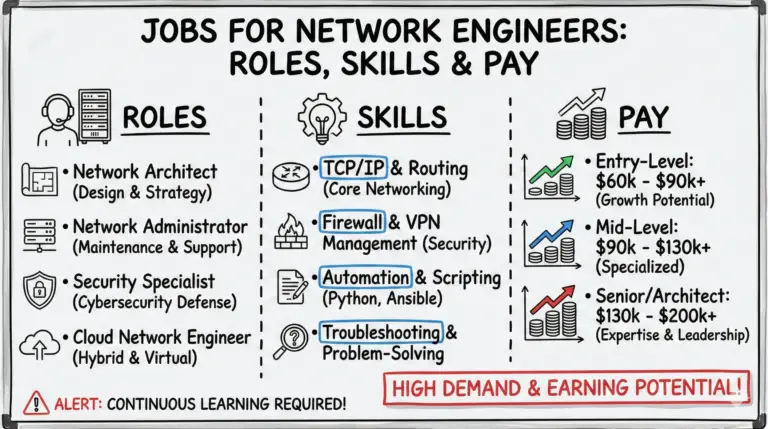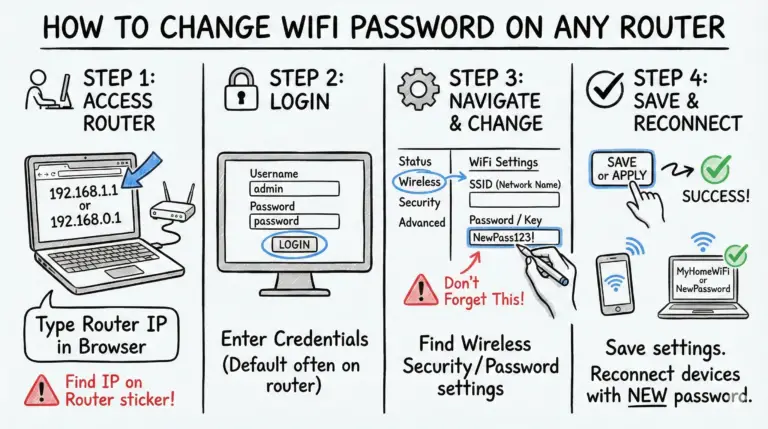Fiber or cable? If you crave the fastest, most reliable internet, fiber is the clear winner. However, cable is often more budget-friendly and widely available.
Keep reading to discover why fiber dominates in speed and reliability while cable still holds its own in affordability and accessibility. We’ll break down the pros and cons of each so you can confidently choose the best internet for your home.
Fiber vs Cable Internet – Comparison Table
| Feature | Fiber Internet (🌐) | Cable Internet (📺) |
|---|---|---|
| Speed | 🚀 Extremely high speeds up to 10 Gbps | 🏃 Moderate to high speeds up to 1 Gbps |
| Upload Speeds | ⬆️ Symmetrical (upload speeds as fast as download speeds) | ⬆️ Generally lower than download speeds |
| Latency | 🕹️ Very low, ideal for gaming and video calls | 🎮 Lower than DSL but higher than fiber |
| Reliability | 🔒 Highly reliable, less prone to interference | 🛡️ Generally reliable, some susceptibility to outages |
| Availability | 🏙️ Limited to certain urban and suburban areas | 🌎 Widely available across the U.S. |
| Cost | 💸 May be more expensive per Mbps | 💵 Cost-effective, varied plans available |
| Installation | 🛠️ Requires installation of special fiber-optic lines | 📡 Uses existing coaxial cable lines |
| Best for | 🎬 Streaming high-definition video, heavy internet use | 🍿 Casual streaming, everyday use |
| Technology | 🌟 Uses optical fibers to transmit data as light pulses | 🌐 Uses copper coaxial cables for data transmission |
What is Fiber Internet?
Fiber-optic internet, or simply fiber internet, is the newest and most advanced type of broadband connection. It uses thin, flexible strands of glass or plastic called optical fibers to transmit data as pulses of light or light signals.
Some key things to know about fiber internet:
-
Offers the fastest download and upload speeds available, often up to 1 Gbps or higher
-
Provides symmetrical upload and download speeds, meaning uploads are as fast as downloads
-
Has very low latency for responsive browsing and gaming
-
Is highly reliable and resistant to interference
-
Requires special fiber-optic cables to be installed directly to your home (FTTH)
-
Has limited availability compared to cable or DSL, mainly in select cities and neighborhoods
The technology behind fiber enables it to deliver blazing-fast gigabit and multi-gigabit speeds to homes, far surpassing cable internet in terms of raw speed and performance. If you’re a hardcore gamer, creative professional, or just want the absolute best, fiber is hard to beat.
See also:
What is Cable Internet?
Cable internet is a broadband connection that uses the same copper coaxial (coax) cables as cable TV service to transmit data. It’s been around much longer than fiber and is widely available across the US.
Some key things to know about cable internet:
-
Offers speeds ranging from 25 Mbps to 1 Gbps, with downloads much faster than uploads
-
Shares bandwidth with neighbors, so speeds can slow down during peak usage times
-
Has higher latency than fiber but lower than DSL
-
Is generally reliable but more prone to outages and interference than fiber
-
Runs over existing cable TV lines already installed in most homes
-
Is available to over 80% of US households, especially in urban and suburban areas
Cable internet is a solid, tried-and-true option that offers good speeds at reasonable prices. It’s a step up from DSL and can handle the needs of most households, including streaming HD video and light gaming.
Head-to-Head Comparison: Fiber vs Cable
Now let’s directly compare fiber and cable internet in a few key areas to highlight their differences:
Speed
-
Fiber: Symmetrical speeds up to 1 Gbps, 2 Gbps, 5 Gbps or more in some areas
-
Cable: Download speeds up to 1 Gbps but much lower upload speeds, typically under 50 Mbps
Fiber is the clear winner here, offering the bleeding-edge speeds and bandwidth to effortlessly handle anything you throw at it. Cable is no slouch, but it can’t match fiber in raw throughput, especially for uploading data.
Latency
-
Fiber: Extremely low latency under 20 ms
-
Cable: Moderate latency around 20-40 ms
Latency, or “ping”, measures responsiveness – how quickly your inputs reach the server and come back. Fiber boasts lower latency, making it feel snappier for gaming and video calls. Cable’s latency is still solid for most uses.
Reliability
-
Fiber: Highly reliable with robust, dedicated connections resistant to interference
-
Cable: Generally reliable, but bandwidth is shared and more susceptible to outages
With it’s advanced technology and infrastructure, fiber provides consistent, dependable performance. Cable is usually reliable but more prone to slowdowns and outages due to its shared bandwidth model and aging coaxial cables.
Cost
-
Fiber: Typically costs more per Mbps, but prices are dropping as it expands
-
Cable: Wide range of affordable plans, with gigabit options at a premium
Comparing prices, cable tends to be cheaper, though fiber has become more competitive. You’ll pay more per Mbps for fiber but its high speeds mean you can often get away with a slower, cheaper plan. Gigabit plans are pricey for both.
Availability
-
Fiber: Available to roughly 40% of US homes, mainly in urban areas with high population density
-
Cable: Available to over 80% of US homes, including most urban and suburban areas
This is cable’s biggest advantage. It’s accessible to the vast majority of the population, while fiber is still limited. But fiber availability is expanding every year as providers build out their networks.
Which is Better for Streaming and Gaming?
Two of the most demanding and popular internet activities are streaming HD video and competitive online gaming. Which type of connection is best for these bandwidth-heavy uses?
Streaming
-
Fiber: excels at streaming 4K HDR content, multiple streams, and heavy simultaneous usage
-
Cable: handles typical HD streaming well but may buffer at busy times or with multiple streams
If your household does a massive amount of Netflix binging or wants a flawless experience streaming in the highest quality, fiber’s pure speed and consistency make it the superior choice. But cable is plenty sufficient for most streaming situations.
Gaming
-
Fiber: The holy grail for gaming, with top speeds, low latency, and rock-solid reliability
-
Cable: Good for casual gaming but falls short for competitive play demanding the fastest reflexes
Any serious, hardcore gamer will want to jump on board the fiber train if they can. The low ping and jitter-free connection give you every possible edge and the smoothest gameplay. That said, cable is still very playable for most gaming needs.
Smart Homes
-
Fiber: Easily handles dozens of connected devices without breaking a sweat
-
Cable: Supports typical smart home setups but may see slowdowns with many devices
If you have a cutting-edge smart home with an abundance internet-connected security cameras, switches, speakers, and more, fiber is your best bet. It effortlessly accommodates the most advanced IoT and automation setups.
Choosing Between Fiber and Cable Internet
With all this information in mind, how do you actually go about choosing between fiber and cable internet for your home? Here are some key considerations:
-
Check which providers and connection types are available at your address (fiber is still limited)
-
Consider your speed needs based on household size and usage (gaming, streaming, WFH, etc.)
-
Look at the cost and contract terms of different plans (bundles, data caps, promo rates, etc.)
-
Factor in equipment, installation, and other fees beyond just the base monthly price
-
Read reviews and ratings of the internet providers available to you (not just the connection type)
-
Think about the future and if your speed/bandwidth needs may grow over time
In summary – if you’re lucky enough to have affordable fiber as an option where you live, it’s probably going to be the best choice for fast, reliable internet, especially for heavy usage households. If not, cable internet is a very capable alternative that meets the needs of most homes.
The Future of Fiber and Cable Internet
Both fiber and cable internet technology continue to rapidly evolve and improve. Let’s take a peek at what the future holds:
-
Fiber providers are expanding their networks to reach more cities and neighborhoods every year
-
Advances like XG-PON2 could bring 10 Gbps fiber speeds to homes in the near future
-
Cable’s DOCSIS 4.0 update promises 10 Gbps downloads, 6 Gbps uploads, and lower latency
-
5G and fixed wireless are emerging as a viable alternative to wired connections in some areas
-
25 Gbps speeds and beyond are on the long-term horizon for both fiber and cable
No matter which option you choose, one thing is clear – we can look forward to home internet connections getting faster, better, and more accessible in the years ahead. It’s an exciting time as the technology rapidly advances.
To Conclude
We’ve covered a lot of ground in comparing fiber vs cable internet connections. To recap the main points:
-
Fiber is the fastest, most advanced broadband technology with gigabit speeds and high reliability
-
Cable is widely available, affordable, and offers solid speeds that meet the needs of most households
-
Fiber is best for gaming, heavy streaming, and smart homes if you can get it and afford it
-
Cable is a good, sensible choice for typical browsing, streaming and home office needs
-
Availability is a key limiting factor, with cable accessible to far more people than fiber today
The “best” choice ultimately comes down to your unique situation, location, and needs. Consider the factors we’ve outlined and see what options you have from providers in your area. Don’t forget to read the fine print on contract terms and watch for extra fees.
No matter which route you go, having a fast, reliable internet connection has never been more important for learning, working, and staying connected. Hopefully this in-depth look at fiber vs cable internet has given you the knowledge to make an informed, confident decision. Happy surfing!
- How to Configure a Secure Site-to-Site VPN on Cisco Firepower Complete Guide - December 3, 2025
- Jobs for Network Engineers: Roles, Skills & Pay - December 3, 2025
- How to Change WiFi Password on Any Router : The Last Guide You Need - December 1, 2025



